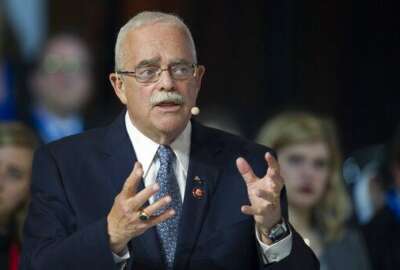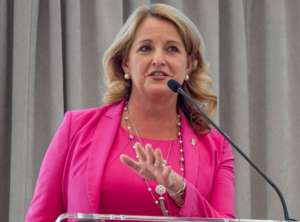
Federal CIO: Limited TMF funding shrinks scope of IT modernization projects
New guidance from OMB this week prioritizes the optimization of existing data centers over further consolidation.
Five agencies saw higher scores this year under the eighth Federal IT Acquisition Reform Act (FITARA) scorecard released by the House Oversight and Reform Committee, and another five agencies posted lower scores. But members of the committee have expressed concerns with how the Office of Management and Budget will measure progress going forward.
New guidance released earlier this week from OMB no longer requires agencies to maintain inventories of the smaller, non-tiered data centers that make up about 80% of their inventory and would prioritize the optimization of existing data centers over further consolidation.
Carol Harris, the director of IT management issues at the Government Accountability Office, said the updated guidance would make it difficult for Congress and her office to track progress.

Federal Chief Information Officer Suzette Kent said some agencies still don’t yet have a sense of whether some applications will move to the cloud or stay in on-premises data centers. But Oversight and Reform Subcommittee Chairman Gerry Connolly (D-Va.) said the focus on optimization gives agencies wiggle room to avoid consolidation.
Five agencies posted higher scores on this year’s FITARA scorecard: The departments of Agriculture, Defense, Justice and Treasury, as well as the Nuclear Regulatory Commission.
Another five agencies posted lower scores on FITARA: The departments of Energy, Homeland Security, Health and Human Services, the Environmental Protection Agency and NASA.
The House on Wednesday passed a “minibus” of spending bills that would give the Technology Modernization Fund $35 million, a sum that subcommittee ranking member Mark Meadows (R-N.C.) dismissed as a “rounding error” in the greater scheme of federal spending.
Connolly had proposed an amendment that would have increased the fund to $50 million for FY 2020, but the amendment failed to pass.
Related Stories
“We have a plan for solvency, but it limits the number of projects and the acceleration of modernization that we can do going forward. That’s my concern,” Kent said.
“They had to reconcile the spend and the payback plan and what the benefits look like in a way that they have never been tasked to do before to ensure that it is cost recoverable,” Kent said.
But Connolly said agencies that have created working capital funds, which hold the costs savings from IT modernization projects, have been unable to access those funds, even though the MGT Act authorized agencies to create those funds.
“We passed the law, it’s quite clear what the intent is,” Connolly said. “They have a sudden hurdle from inside agencies, attorneys saying, ‘Well no, you can’t do that.’”
But GAO’s Harris said the intention of the law was clear that agencies would have the authority to create these funds. “When MGT was passed, the intent was that that transfer authority would be there. So while I’m not a lawyer, it kind of boggles the mind that you would need additional legislation in order to offer that transfer authority,” Harris said.
Copyright © 2025 Federal News Network. All rights reserved. This website is not intended for users located within the European Economic Area.
Jory Heckman is a reporter at Federal News Network covering U.S. Postal Service, IRS, big data and technology issues.
Follow @jheckmanWFED





